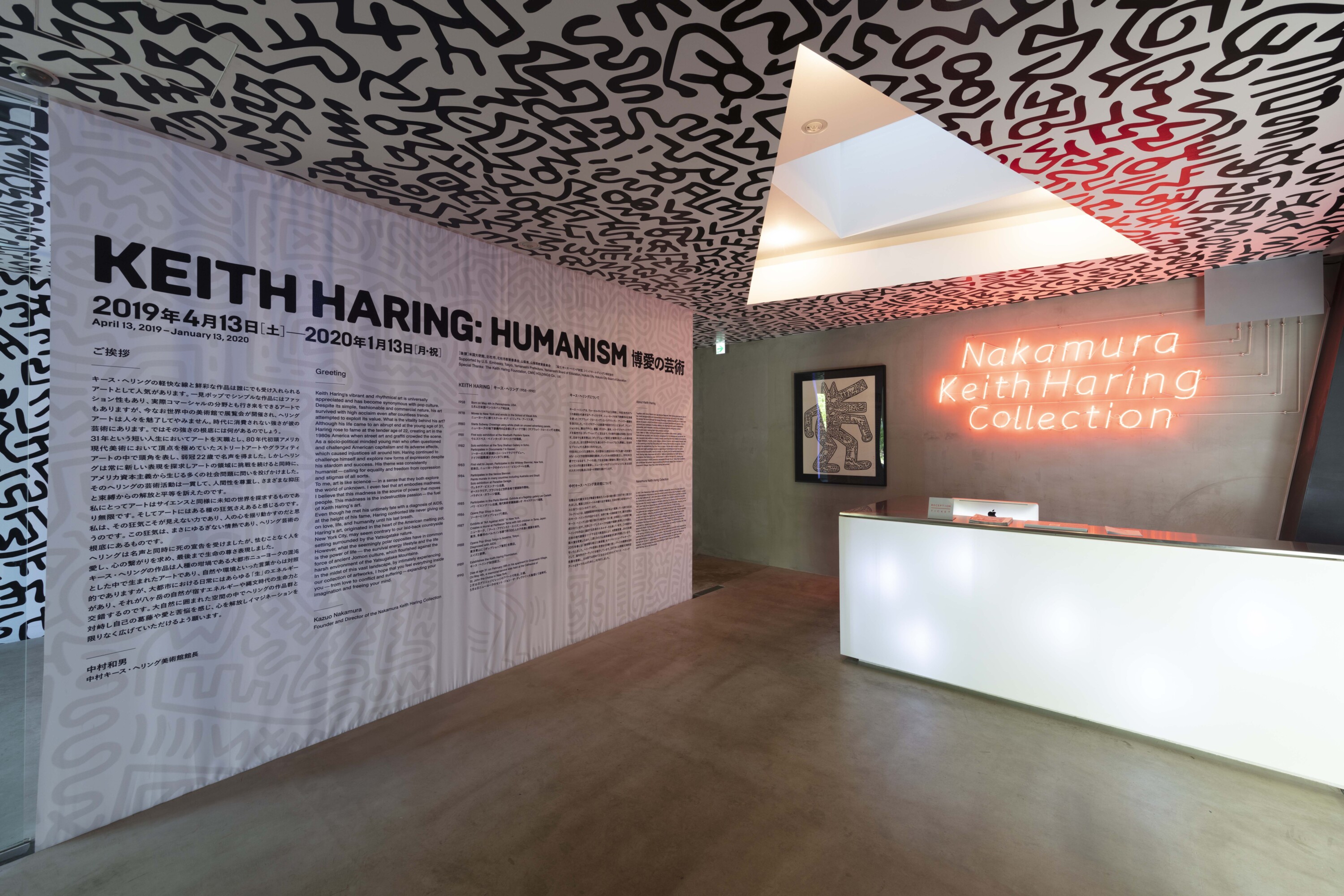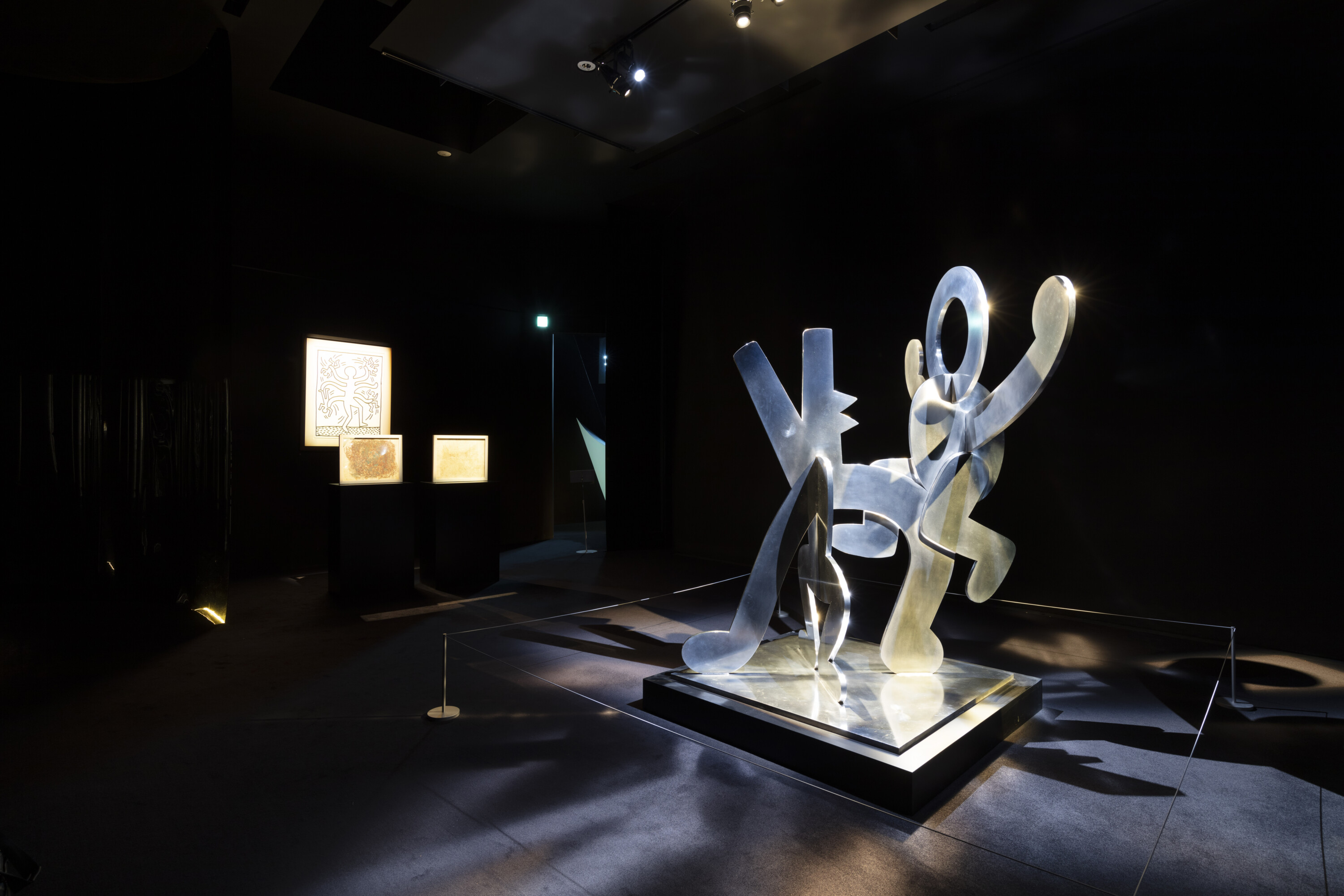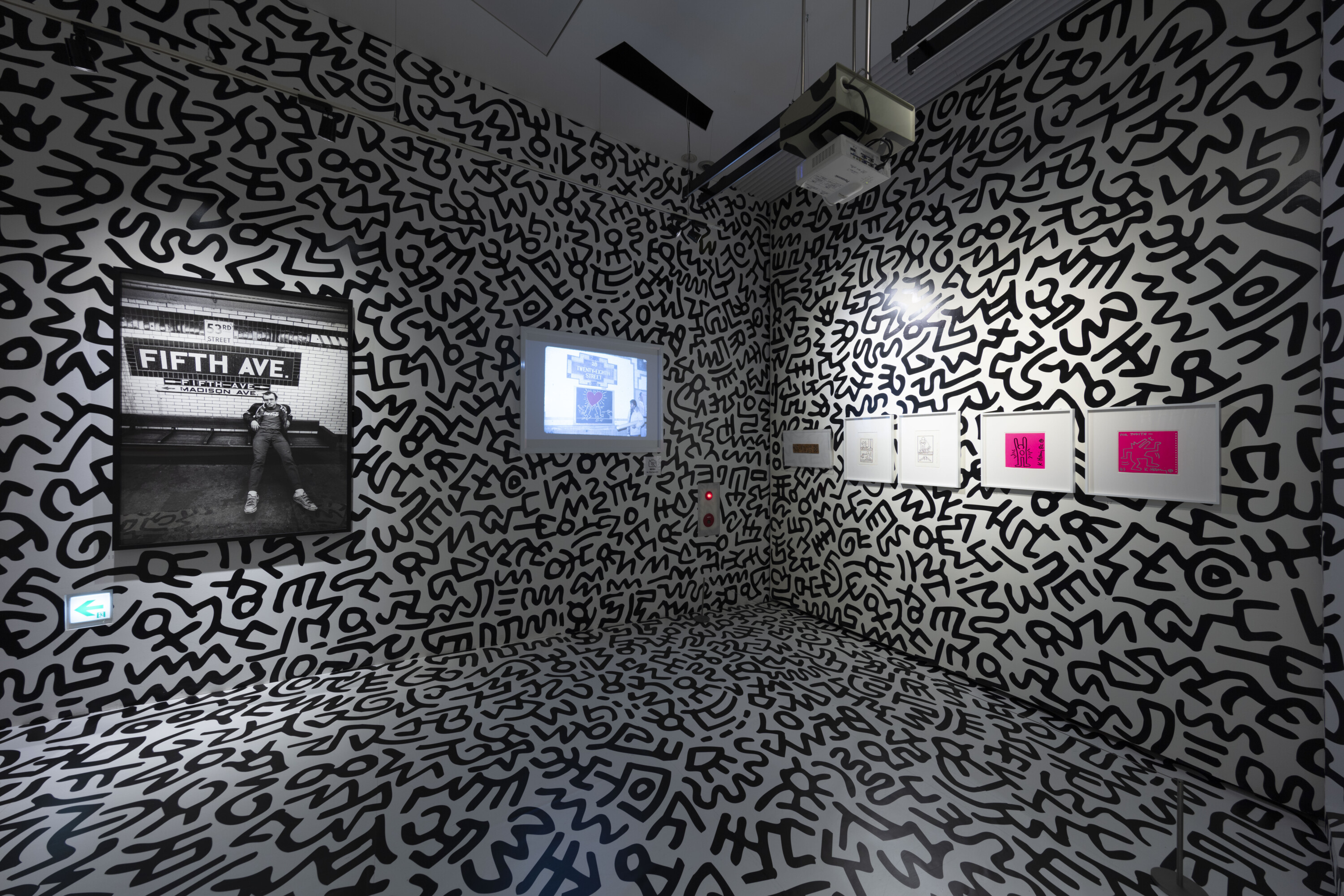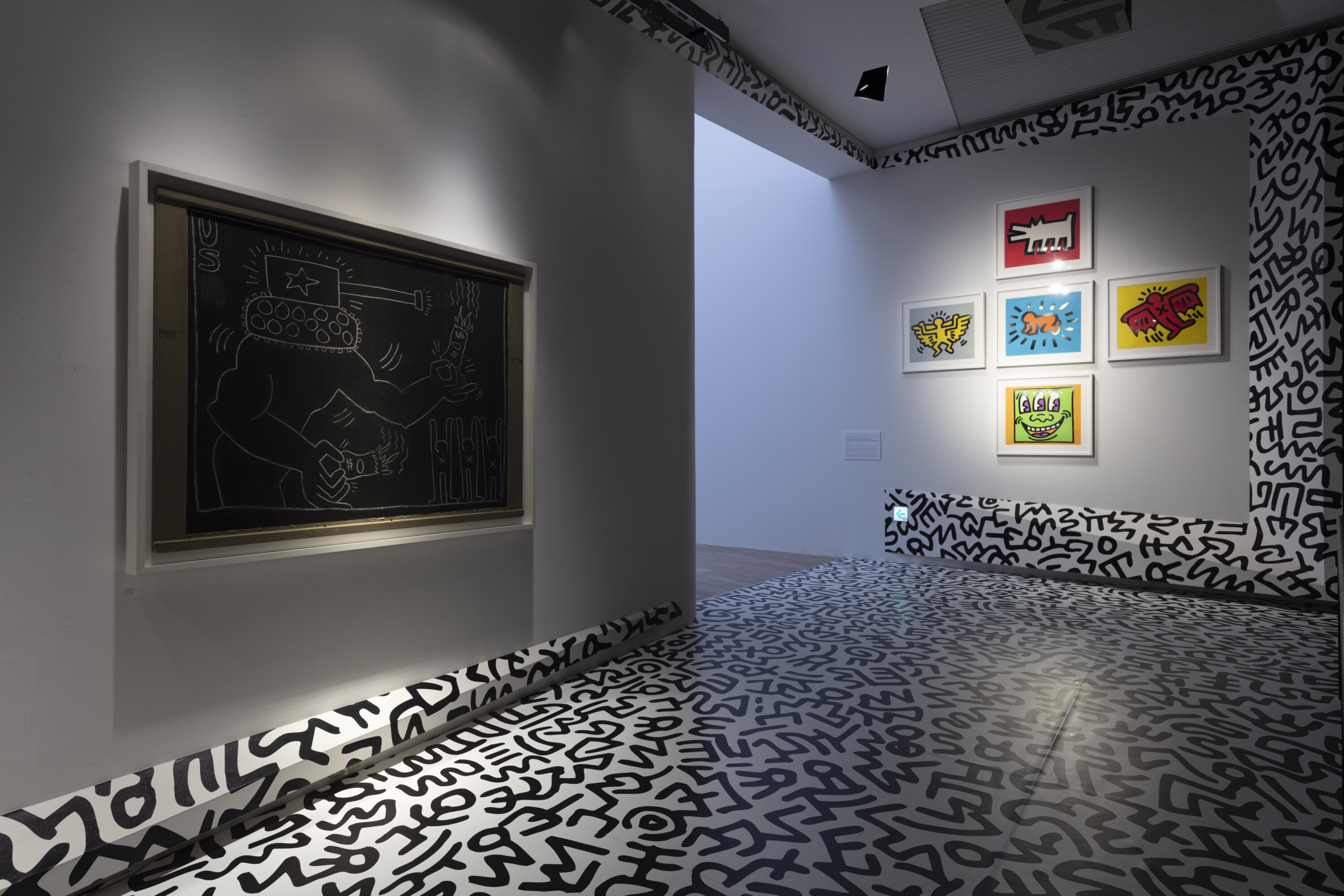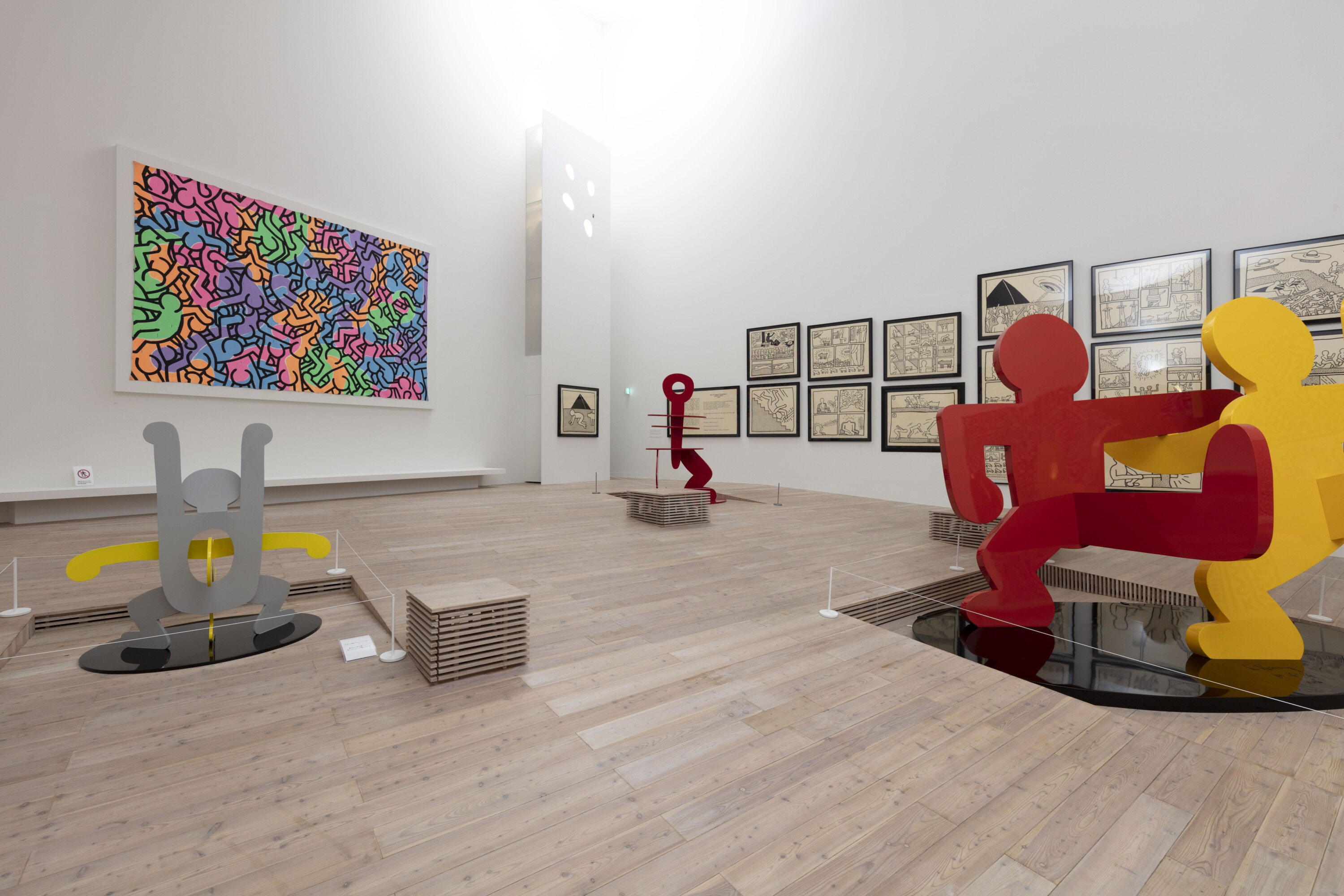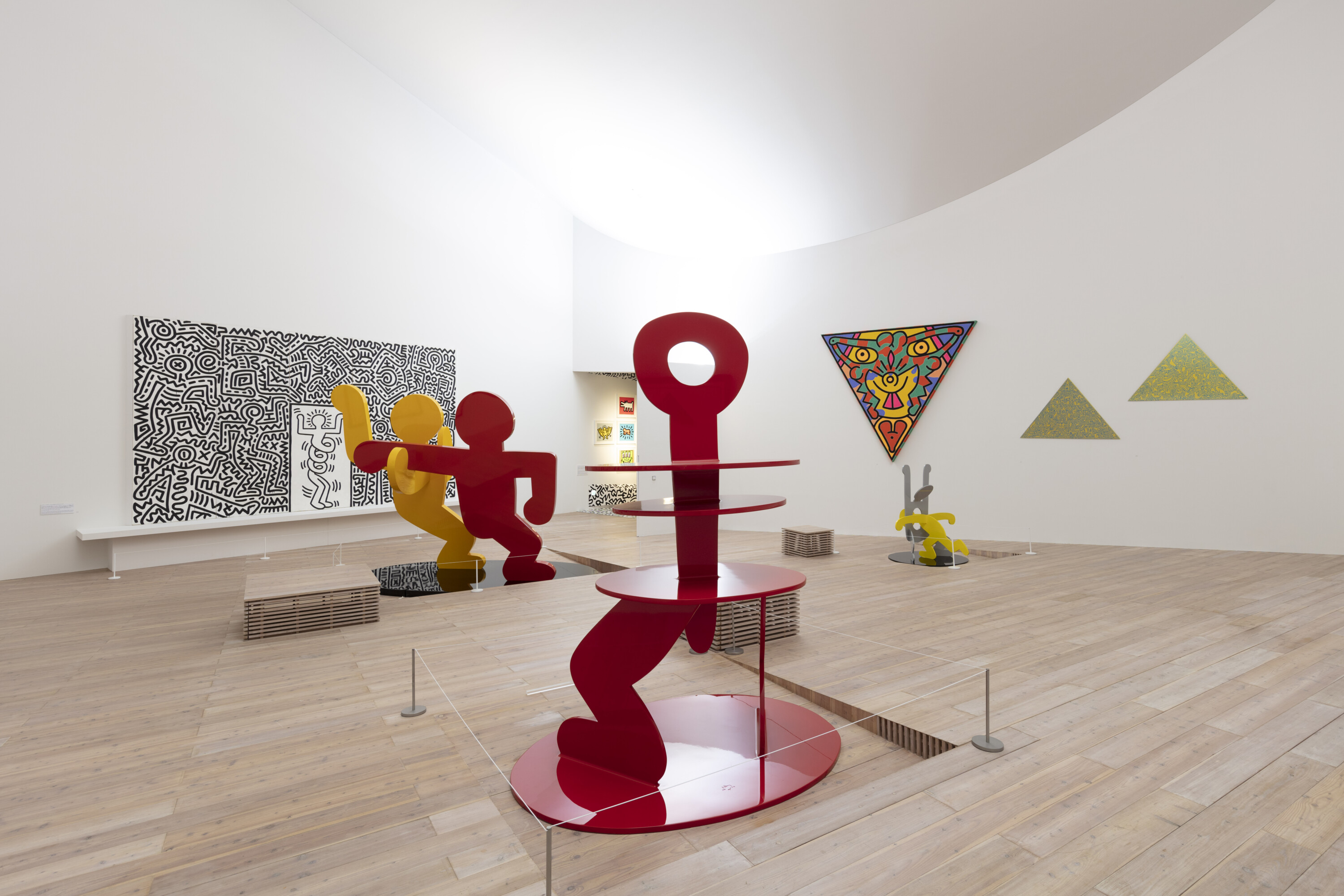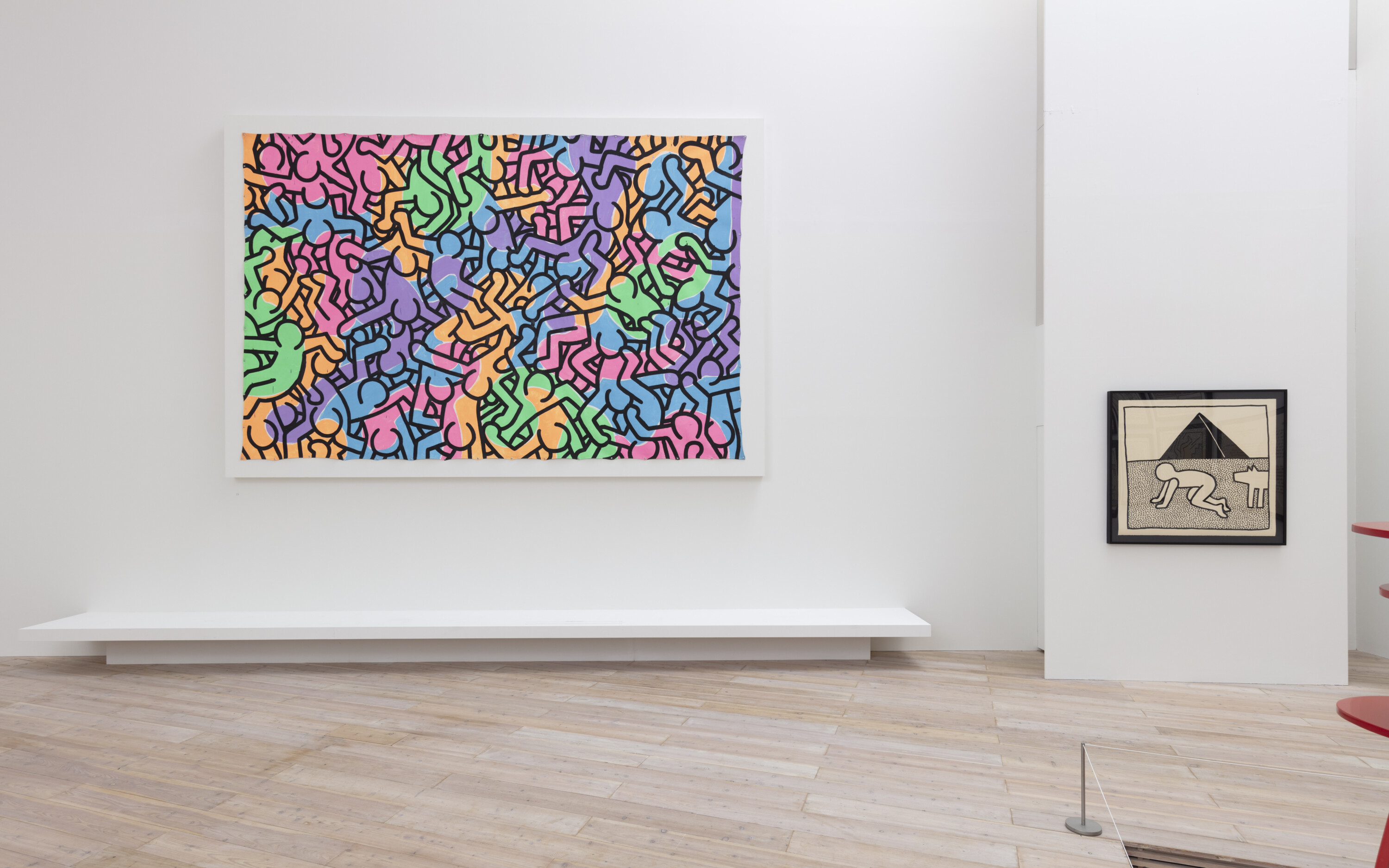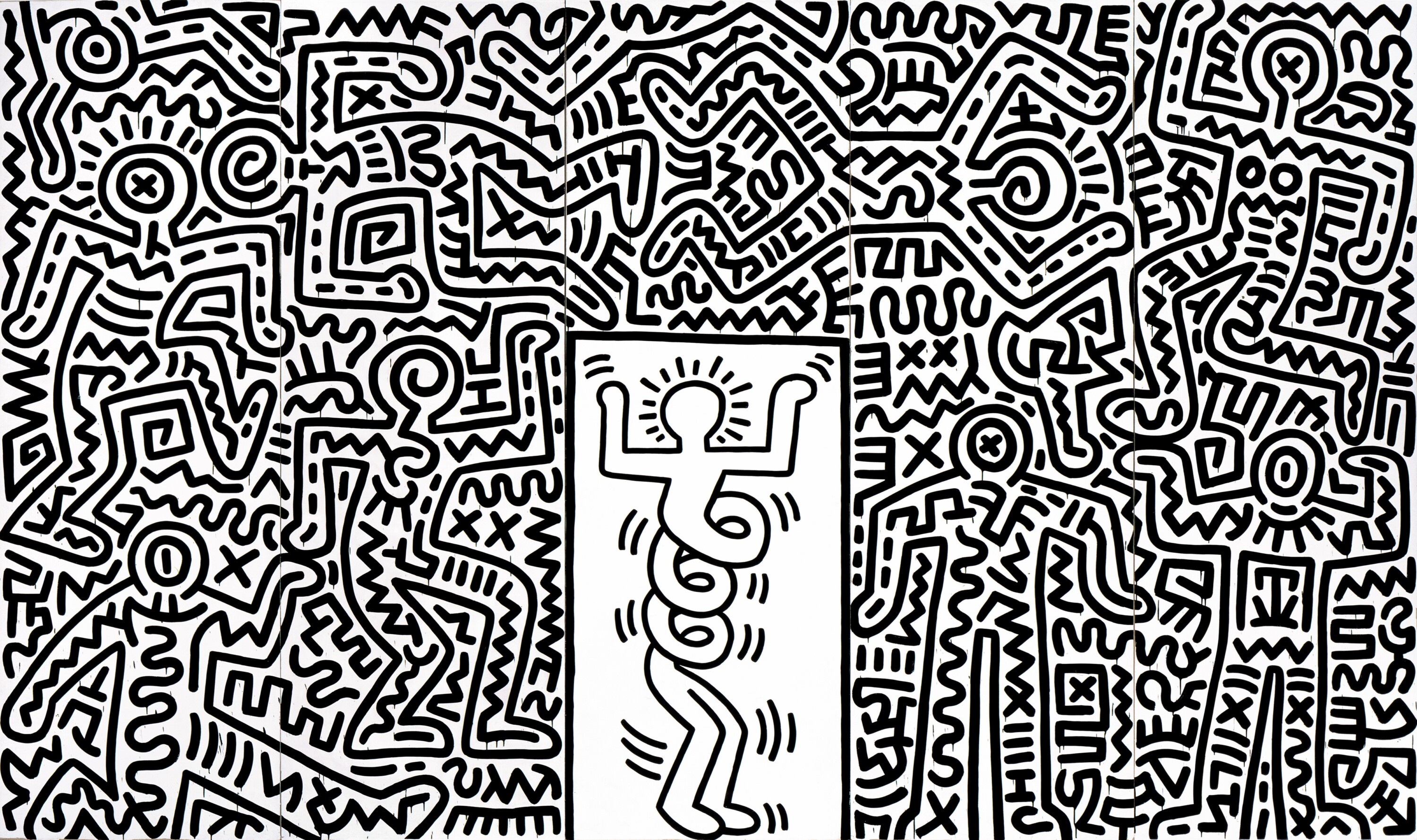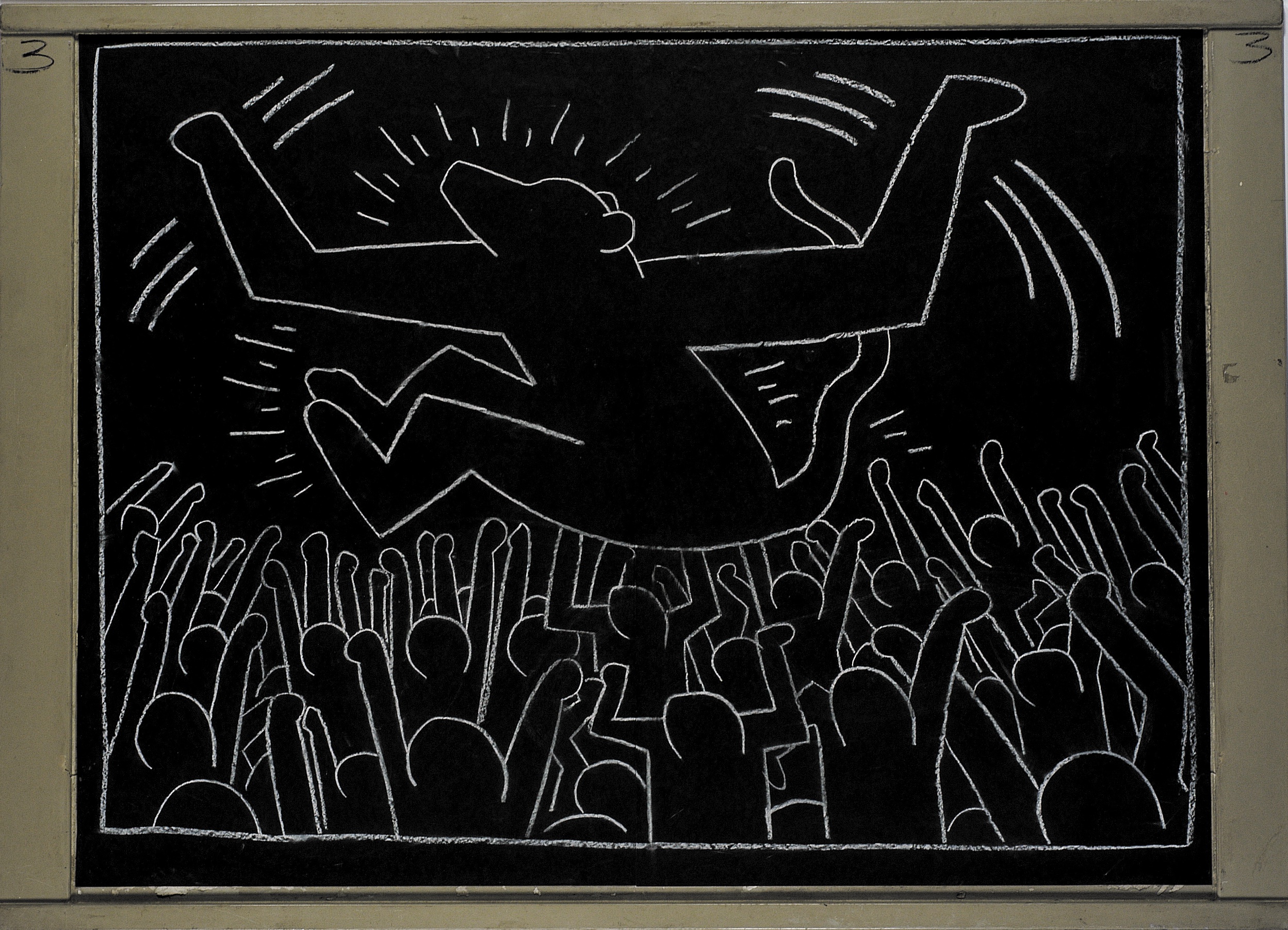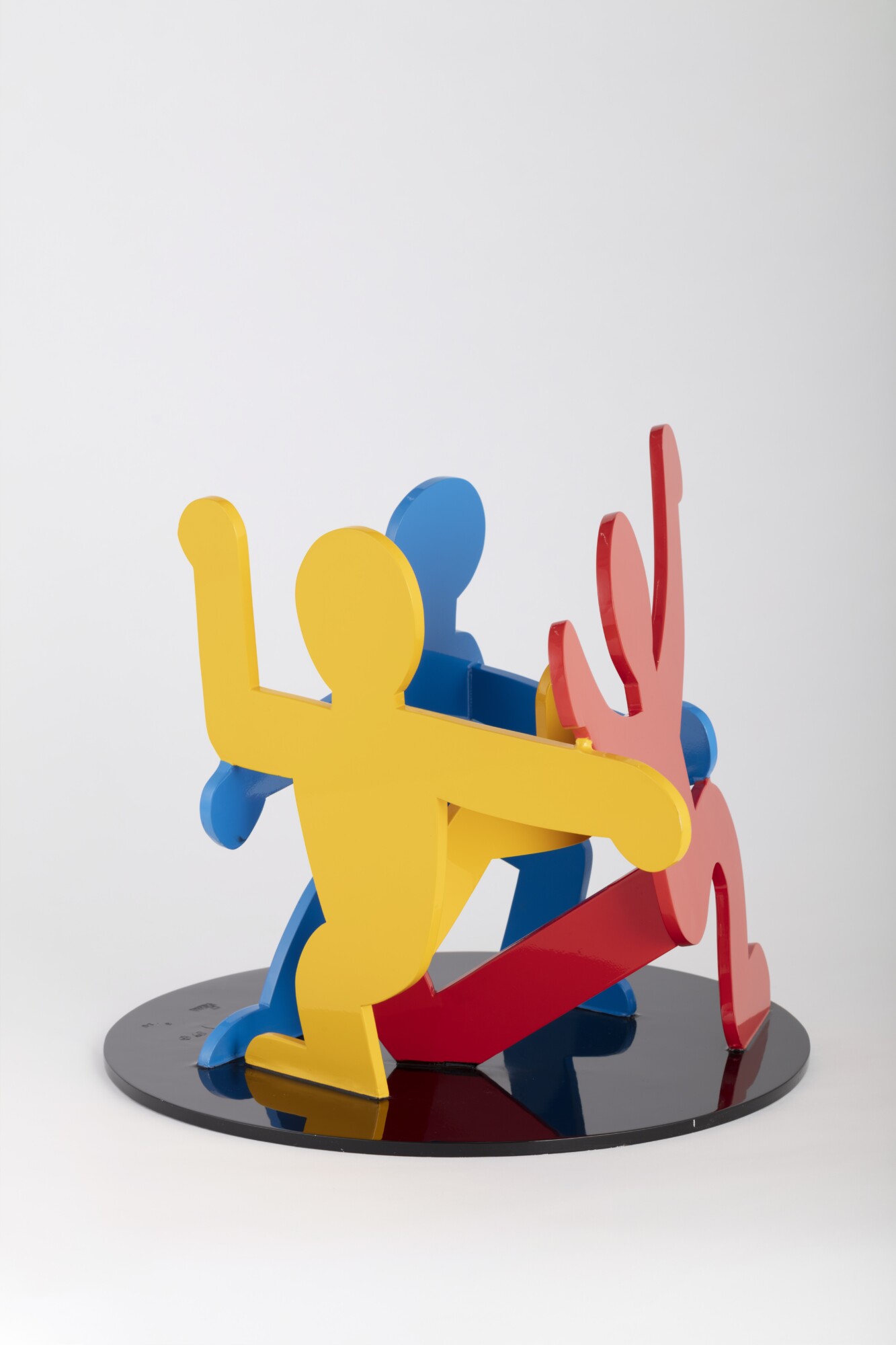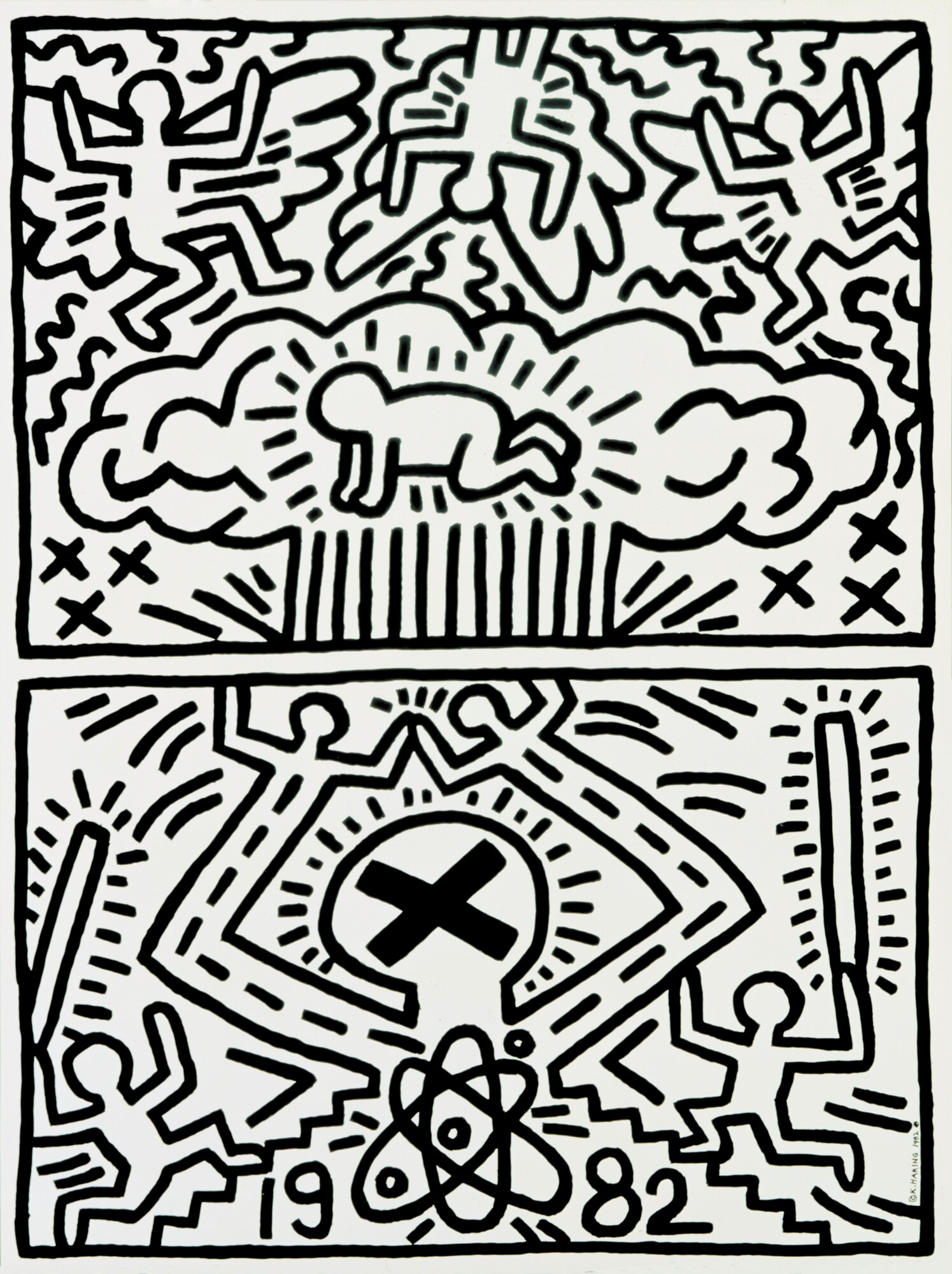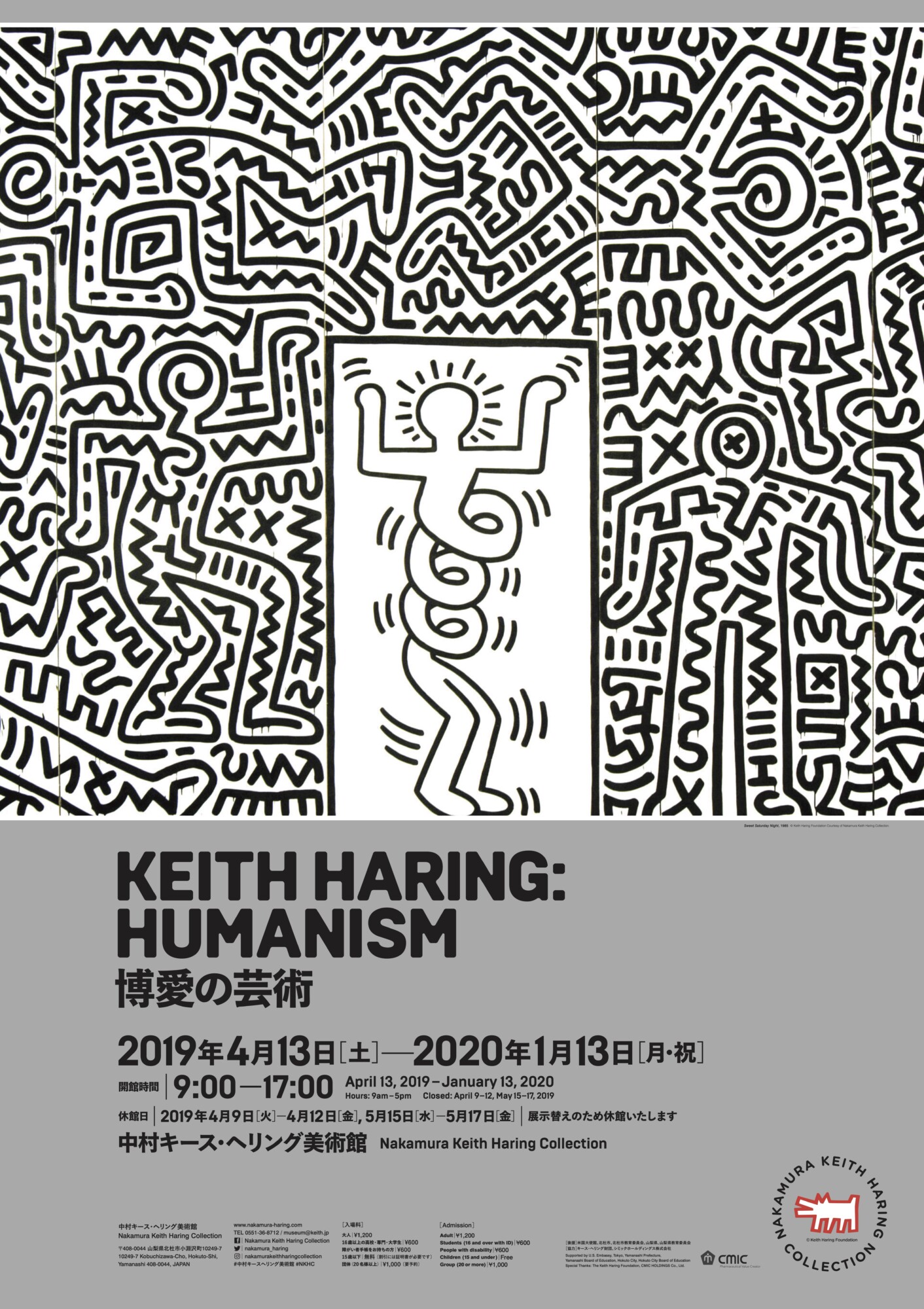
Designed by ©︎Toshiki Koike
Keith Haring: Humanism
Supported by: U.S. Embassy, Hokuto City, Hokuto City Board of Education, Yamanashi Prefecture, Yamanashi Prefecture Board of Education
In Cooperation with: Keith Haring Foundation, CMIC Holdings Co., Ltd.
This exhibition introduces Keith Haring’s belief in love that transcends race, religion, and gender, as well as his rejection of art being monopolized by the wealthy elite, presented alongside the Nakamura Keith Haring Collection.
Around 1980, Haring began creating Subway Drawings across New York City subway stations. Despite the risks of graffiti in public spaces, he pursued these works for nearly five years under his conviction that “art is for everybody.” These drawings quickly brought him fame, transforming subway riders into art viewers.
Born in the small town of Kutztown, Pennsylvania, Haring grew up drawing with his father and attending church with his family on Sundays. When he moved to New York to pursue a career as an artist, he expanded his practice rapidly. Beyond creating works in his studio, Haring traveled extensively, engaging in workshops and mural projects, and donating art to public spaces such as children’s hospitals.
Against the backdrop of 1980s New York—a turbulent time marked by economic decline, racial discrimination, and the AIDS epidemic—Haring used his art to advocate for AIDS prevention, anti-apartheid efforts, and the Africa Emergency Relief Fund. He created numerous posters for these causes, sometimes distributing them for free in public spaces. By championing liberation from societal oppression and advocating for human freedom and equality, Haring consistently embodied the most devout and courageous aspects of humanism through his art.
One of the works that epitomizes Haring’s art is Sweet Saturday Night. Created in 1985, it served as the stage set for a performance at the Brooklyn Academy of Music, celebrating the 300th anniversary of the birth of street and social dance among Black communities. The over-six-meter-wide piece bursts with vitality, with black lines that seem to dance across the surface. It conveys the energy of New York’s thriving club culture at the time, radiating universal love and the joy of life.
“I don’t think art is propaganda; it should be something that liberates the soul, provokes the imagination and encourages people to go further. It celebrates humanity instead of manipulating it.”
—October 14, 1978, Keith Haring Journals
INSTALLATION VIEW
Photo by ©︎Shu Nakagawa
FEATURED ARTWORKS


